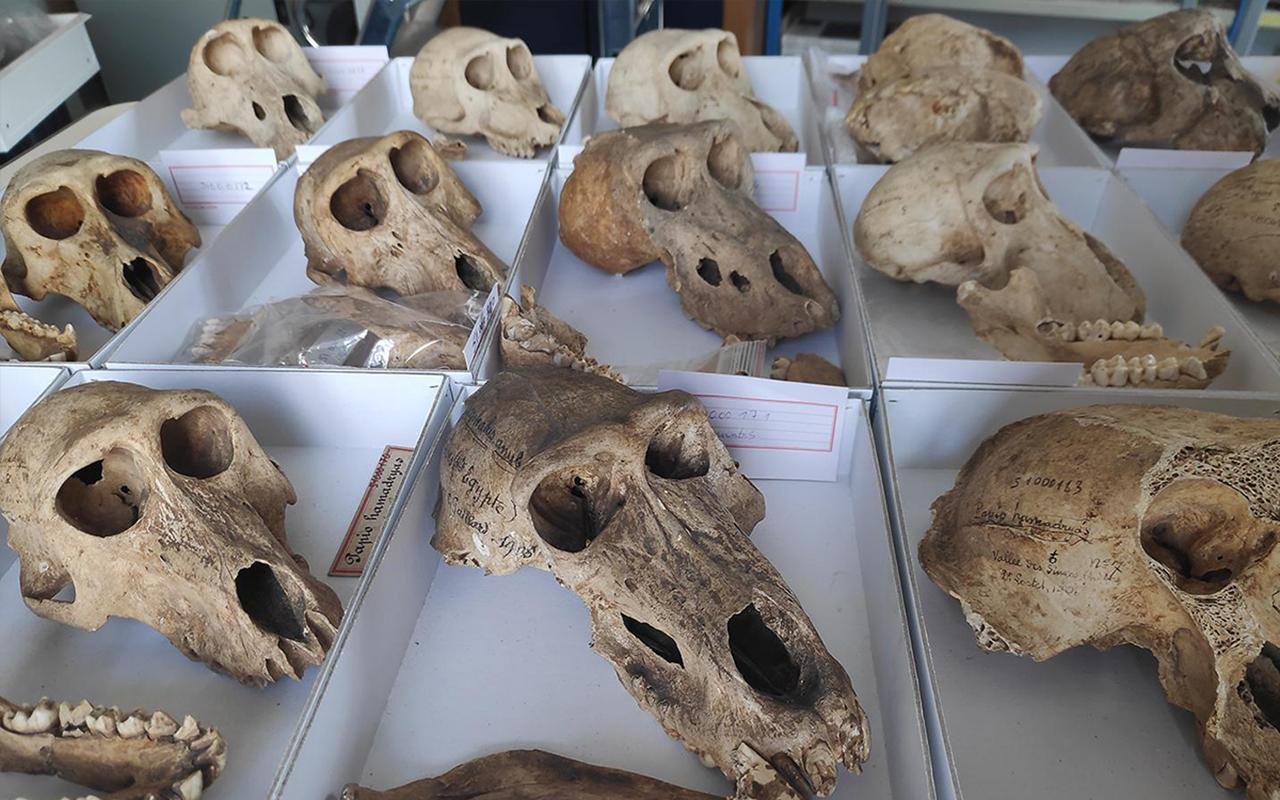Researchers led by Wim Van Neer from the Royal Belgian Insтιтute of Natural Sciences unveiled the challenging lives of sacred baboons in captivity. Published in the journal PLOS ONE, the study focused on 36 mummified baboon bodies discovered in Gabbanat el-Qurud, in the Valley of the Monkeys on the west bank of Luxor, Egypt.
 Thickening of the fronto-parietal region in two baboon skulls. Credit: W. Van Neer et al. PLoS ONE (2023)
Thickening of the fronto-parietal region in two baboon skulls. Credit: W. Van Neer et al. PLoS ONE (2023)
The baboons, revered as sacred beings by ancient Egyptians, played crucial roles in rituals and were often mummified postmortem. Despite their revered status, the analysis of skeletal remains spanning from 800 to 500 BCE indicates that the baboons faced challenging living conditions, with signs of malnutrition and lack of sunlight exposure evident in their skeletal remains.
The study revealed that only four out of the 36 baboons appeared to be in good health, while the rest displayed deficiencies in their skeletons, including bent limbs typical of rickets. The skeletons were compared to those found at other ancient Egyptian sites, such as Saqqara and Tuna el-Gebel, unveiling a consistent pattern of captive care across locations.
The baboons, imported from regions like present-day Sudan and the Horn of Africa, were likely bred and reared in captivity, aligning with the broader Egyptian practice of mummifying animals deemed embodiments of gods.
 Credit: Bea De Cupere, CC-BY 4.0
Credit: Bea De Cupere, CC-BY 4.0
Baboons, ᴀssociated with the moon god Thoth and symbolizing wisdom, intelligence, and communication, were likely imported due to their non-native status in Egypt. While the Egyptians revered these animals, their lack of knowledge about proper care and feeding may have unintentionally led to detrimental conditions for the baboons.
Despite good intentions, the captive primates were deprived of sunlight, leading to metabolic disorders like rickets. However, the study clarified that there was no evidence of intentional physical abuse or mistreatment.
The study’s findings confirmed through radiocarbon dating and analysis of bone collagen, challenge previous estimates of the mummies’ age, placing them between 803 and 520 BCE. Conditions for the baboons in captivity might have been even worse than suggested by their skeletal remains, as bones often do not preserve records of parasites and other ailments.
The researchers proposed further investigations, including microwear analysis on the baboons’ teeth to understand their diets better and the potential extraction of DNA to determine if the baboons were caught in the wild or bred in captivity.
More information: Van Neer W, Udrescu M, Peters J, De Cupere B, Pasquali S, Porcier S (2023) Palaeopathological and demographic data reveal conditions of keeping of the ancient baboons at Gabbanat el-Qurud (Thebes, Egypt). PLoS ONE 18(12): e0294934.





